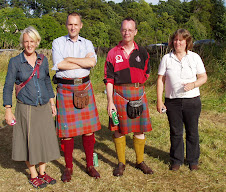Comments
That seems to me a most extraordinary coincidence, Barbara M
and Grannypurple, that you should meet on the Queen Mary II like that. I have
about 300 readers a day – it’s not as if
I were Franklin or Queer Joe. Go figure, as they say.
And it was interesting, too, to learn that Good King Henry
is growing at the Cloisters. Those people at Plymouth-spelled-funny never did
answer my email about the taste. (They were quoted in the NY Times as saying it
is bland. It is not.) Mine is doing splendidly, by the way. Pests from slugs on
up to deer clearly recoil from it like Kristie
from a lima bean. And cooking it with spices is the way forward.
My mother said once that she was glad to have been born late
enough in history to travel by air. I rejoice, on the contrary, to have come
along early enough to have travelled from America
to Europe and back by sea when that was the
way everybody did it.
Knitting
Well. I got badly stuck on that Reverse French Heel last
night, and am at the moment somewhat less far forward than I was at this time
yesterday. I blame Schurch and Parrott whose Sock Knitter’s Handbook I am
following slavishly. I think they’ve got something wrong here.
Essentially, one begins with the gussets; then one turns the
heel; then one knits the flap. The reverse of the top-down procedure.
Two things are peculiar about the instructions.
1)
After the gusset increases, they have you put
most of the stitches on holders and turn the heel on the remaining 16 (of 64).
When that is done, and you are ready to start the heel flap, you suddenly “work
across instep stitches in established pattern”. What about those holders? This
is a trivial complaint – I used a very short circular to hold the stitches, and
knit across without difficulty.
2)
You work the heel flap by knitting across and
doing an SSK with the first stitch on the holder, and then purling back and
doing p2tog with the first stitch on the other holder. Well and good. But it
says to go on doing that “until you have 1 st left on each holder”. Wouldn’t
that mean that the entire sock now consists of the 30-stitch heel flap?
My thought last night when I got to that point was, this is
too much for me, I’ll do a peasant heel (= EZ’s “afterthought heel”, I think). So
I ripped back to where the gusset increases began, and then got bogged
down on the question of how long to make the foot, previous calculations having
been based on a different heel.
I’ve done some Googling this morning. Answers are not
abundant. Some websites just do the heel in the usual way, upside down.
(Schurch and Parrott mention that possibility.) My own totally useless blog
post of yesterday comes on the first Google page. But I found this, and this. – Judy Gibson’s solution.
I don’t know what I’m going to do.




I admire your bravery in trying new heels!
ReplyDeleteHello Jean,
ReplyDeleteI hope this is helpful - when I am knitting toe up, I have two sets of stitches the heel ones which are the ones you are working on most of the time and the (instep(?) or upper part of the sock). When you knit the gusset you create extra stitches and what you are doing when decreasing to the last one on the holder - is decreasing the gusset stitches, to bring you back to the number you started with.
(I loved the story about the Jean fanclub on the QM, priceless!)
All the best,
Dawn
Perhaps do your bailout with a Sweet Tomato Heel, since they can be done either toe-up or cuff-down, and you are already familiar and comfortable with them?
ReplyDeleteJean, here's my guess at on point #2 ...
ReplyDeleteSay you worked a 60-stitch leg and then increased with the gussets an additional 30 stitches (15 per side). (By the way, I'm totally making these numbers up ...)
I'd think that after turning the heel, you then knit back & forth across the "original" 30 stitches (i.e. half of the leg total), doing the SSK on the one side (consuming 1 gusset stitch each time) and a P2tog on the other side (consuming 1 gusset stitch on that side each time).
Then, when you have ONE GUSSET STITCH remaining ... do that next step. (Which may well be to knit 3 stitches together -- the last stitch on the flap, the last gusset stitch, and one stitch from the instep. -- Many a toe-up heel flap instructions I've followed have such.)
Hope that helps and doesn't muddle more!
I think I would draw a picture from the directions. I also think they may have forgotten to specify something where it's confusing. Wild guess: Maybe they meant to knit across the instep once before beginning the heel flap; that would mean they forgot to specify that having done so, you still need to know where the gussets end and the original instep stitches are. (Place markers?) I believe you would decrease the gusset stitches down to get to the original instep stitches plus heel flap stitches.
ReplyDeleteWendyKnits has a toe up Slip Stitch Heel pattern (free) on Ravelry. On her website, www.wendyknits.net, she has a section of free patterns, and she has both a fingering weight and a slightly thicker weight sock pattern for Toe Up French Heel. Although it is not called that.
ReplyDeleteI have been following that pattern, and so far, if I just follow the pattern, it is clear, and all the numbers work out.
When she wrote her book, Socks from the Toe Up, she mostly put her generic basic patterns in the book, and then designed socks to fit into those basic shapes.